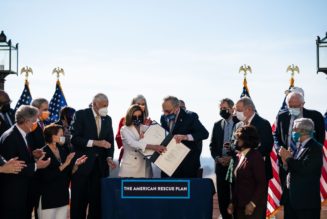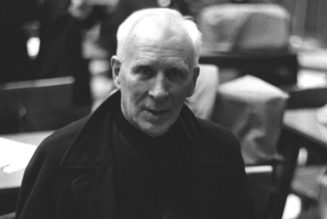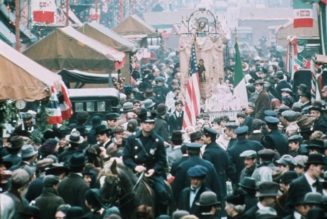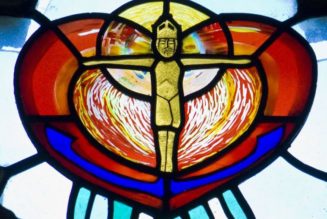, April 1, 2021
I 
I’ll never forget what a colleague said to me one Easter when I was working on Capitol Hill. “I feel like Easter changed everything,” he said. “I bet even colors were different before Easter.”
He is right. The incarnation, death and resurrection of God was a cataclysmic event that changed everything such that only poets can express it.
On that first Easter morning, though, it was Mary Magdalen, Peter and John who struggled to understand it. On this year’s Easter Sunday, the Resurrection of the Lord, Year B, we can learn a lot from them.
Look carefully at what Mary Magdalen, John, and Peter did.
St. Mary Magdalene is the faithful Jew who carefully observed the Sabbath day of rest on Holy Saturday, but then, “On the first day of the week,” as soon as she could, she rushed to the tomb “while it was still dark.” When she found the Tomb empty, the Gospel says “she ran” to tell the Apostles. Once they heard her, “They both ran” to the empty tomb. A lot of running happened on the first Easter morning. They seemed to sense that something huge was going on, even though the Gospel tells us they didn’t fully understand yet.
John, who wrote this Gospel passage, reports that he ran faster but didn’t even look into the tomb until Peter arrived. When he finally looked, John says they “saw and believed,” but then he adds a cryptic remark: “For they did not yet understand the Scripture that he had to rise from the dead.”
We heard John’s answer to that cryptic remark a few weeks ago.
In the Third Week of Lent, John reported that Jesus proclaimed in the Temple: “Destroy this temple and in three days I will raise it up.”
“He was speaking about the temple of his body,” he says, then adds: “Therefore, when he was raised from the dead, his disciples remembered that he had said this, and they came to believe the Scripture and the word Jesus had spoken.”
What was so significant about this odd remark that remembering it did more for John’s faith in the Resurrection than the actual Empty Tomb? It made sense out of everything the disciples were experiencing: The passing away of the Old Covenant and the arrival of the New.
The Temple was the dwelling place of God with mankind. But Christ himself was one “greater than the temple,” the ultimate Emmanuel, God-with-us. After the Resurrection, John realized, there is a new place God dwells with us: the body of Christ, the company of those who partake in the Eucharist, uniting with him; the Church.
“Both the Body of Jesus and the temple seem to me to be a type of the Church, which with lively stones is built up into a spiritual house, into a holy priesthood,” says Origen of Alexandria (c. 184-c. 254).
John would have understood that, and something else: that now the whole world was becoming a Temple. It was John who reported Jesus’s words to the woman at the well. She was a Samaritan who believed Mount Gerizim, not the Temple, was the place to worship God. Jesus tells her, “The hour is coming when neither on this mountain nor in Jerusalem will you worship the Father.”
That hour came with Jesus’s destruction on the cross which “presaged the destruction of the Temple,” says the Catechism, bringing “the dawning of a new age in the history of salvation,” where God can be worshiped everywhere.
“The stone that the buildings rejected has become the cornerstone,” says the Psalm on Easter day, and now, we might say, the whole world “is wonderful in our eyes.”
In the beginning, all the world was a Temple when God walked with Adam and Eve in the Garden.
Their sin destroyed Eden, but throughout Lent this year, the Church has been showing Jesus at work, re-Edenizing the world.
- The First Sunday compared two temporary Edens: Jesus living with wild beasts in the desert while Noah with wild beasts in the Ark.
- The Second and Third Sundays presented three mountaintop Edens:
- Mount Moriah, where God walked and talked with Abraham and Isaac;
- Mount Tabor, where Jesus, Moses and Elijah along with Peter, James and John heard the Father’s voice; and
- Mount Sinai, where Moses received the Ten Commandments.
- In the Fourth Sunday, Moses raised up the bronze serpent, using Eden’s sign of destruction to Edenize the desert; and Jesus promised he would be raised up the same way, for “everyone.”
- On the Fifth Sunday, the Father’s voice thundered in Jerusalem, making Christ’s passion the new sign of death that saves.
Jesus was raised up, as he promised — in the Eucharist on Holy Thursday, on the cross of Good Friday, and from the tomb at Easter — filling the world with his grace. The Easter Vigil on Holy Saturday night lapses into poetry to describe the re-Edenization of the world.
“Glory floods the earth, dazzling the night,” says the Exultet. “O truly blessed night, when things of heaven are wed to those of earth, and divine to the human.”
Poets down the ages have seen the power of this new reality.
St. Augustine, in a poetic Easter sermon, saw Christ everywhere:
“Question the beauty of the earth, the beauty of the sea, the beauty of the wide air around you, the beauty of the sky; question the order of the stars, the sun whose brightness lights the day, the moon whose splendor softens the gloom of night; question the living creatures that move in the waters, that roam upon the earth, that fly through the air … question all these. They will answer you: ‘Behold and see, we are beautiful.’ Their beauty is their confession of God.”
Gerard Manley Hopkins saw Jesus everywhere also. In “As kingfishers catch fire,” which scholars say he wrote in Easter of 1877, he saw Jesus in a bird, but also in every human being:
“Christ plays in ten thousand places,
Lovely in limbs, and lovely in eyes not his
To the Father through the features of men’s faces.”
All that’s left now is for us to share that joy and continue the Resurrection of Christ in the world.
“We have not yet risen in the power of the blessed resurrection, which is still going on, and is yet to be completed,” said Origen. There is much work yet for the Church to do, especially in the fractured 21st century, but victory is assured. “Though the structure of stones seem to be broken up, and all the bones of Christ scattered by adversities and tribulations, yet shall the temple be restored, and raised up again,” he added.
And that brings us back to Mary Magdalene, John and Peter. These three immediately became the models for how we each should encounter the resurrection: laity, religious, priests and bishops.
Like Mary Magdalene, lay people should arise early to seek out Jesus, not in the empty tomb but in the quiet of our rooms. But our faith isn’t personal; we submit it to the Church, as she did. The thoughtful and innovative Christians, the St. Johns, will get to new understandings of Christ first, but should wait for the Church to catch up, and go first.
Also notice that there is no division in these three figures: Magdalene, Peter and John trust each other implicitly, a model for the Church today where we have lost so much trust.
May this Easter start the restoration of the trust the Church needs for Christ’s resurrection to touch the whole world.
Tags: Easter Sunday Year B, Sunday Gospel, Sunday Readings
Never miss a post! Subscribe below to our weekly newsletter.
Related
Join Our Telegram Group : Salvation & Prosperity









